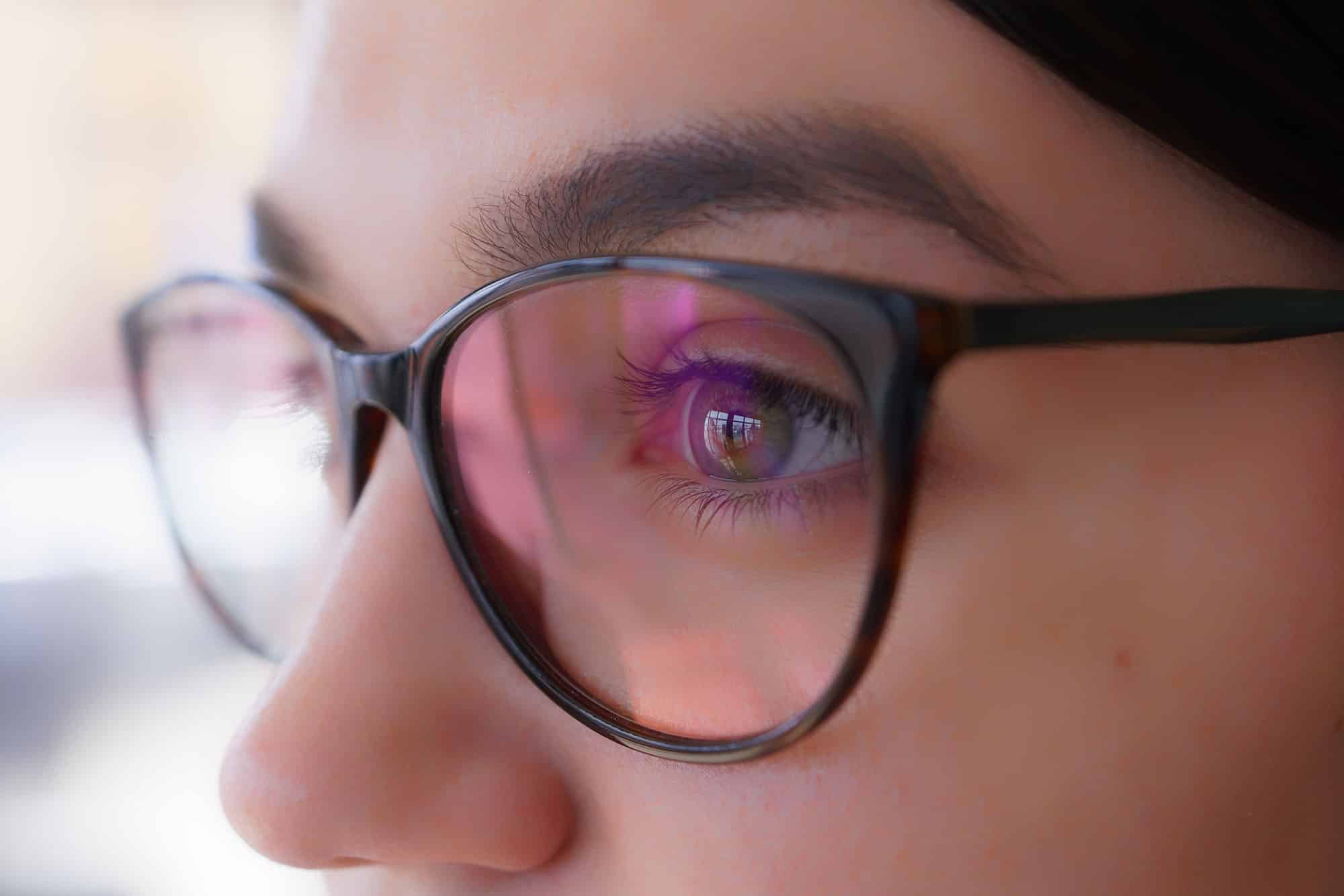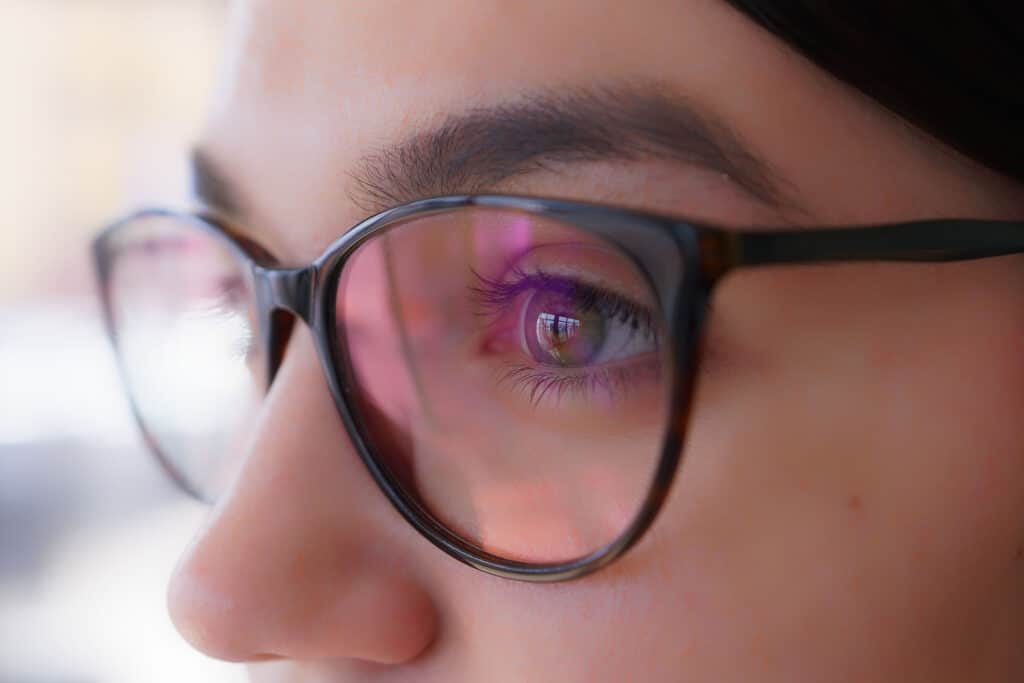
What is Corneal Crosslinking?
Collagen is a crucial protein found throughout our bodies, providing strength and support to various tissues, including corneal tissue. However, for patients with keratoconus, the collagen fibers in the cornea weaken and become susceptible to deformation. The compromised corneal tissue eventually loses its symmetrical dome shape, bulging outwards and resulting in blurry, distorted vision. Corneal crosslinking, also known as collagen cross-linking or CXL, aims to address this problem by strengthening the weakened collagen fibers, improving the cornea’s overall stability, and preventing further progression of keratoconus.
Corneal crosslinking is a minimally invasive procedure that involves the application of riboflavin (vitamin B2) drops to the cornea, followed by exposure to a controlled amount of ultraviolet (UV) light. This combination triggers a photochemical reaction that reinforces the corneal structure by creating new bonds, or “cross-links”, between the collagen fibers within the cornea.
Debunking Common Myths about Corneal Crosslinking
Despite the growing popularity of corneal crosslinking, there are still several misconceptions and myths surrounding this treatment. Let’s address and debunk four of the most common myths:
Myth #1: Corneal crosslinking is a painful procedure.
Fact: While the procedure may cause some discomfort during the treatment, modern techniques and advancements in anesthesia have significantly reduced the pain associated with corneal crosslinking. Your eye doctor will ensure that you are thoroughly numbed and comfortable throughout the entire process. After the procedure you will likely experience discomfort in the eye which typically resolves within about 24-48 hours after crosslinking is finished.
Myth #2: Corneal crosslinking is not effective in treating keratoconus.
Fact: Research demonstrates the effectiveness of corneal crosslinking in halting the progression of keratoconus and, in some cases, even improving visual acuity. The success rate of the procedure is generally high, with the majority of patients experiencing a stabilization or even improvement in their corneal shape and visual function.
Myth #3: Corneal crosslinking is only suitable for advanced stages of keratoconus.
Fact: While corneal crosslinking is often recommended for patients with moderate to advanced keratoconus, it may be even more beneficial for those in the early stages of the condition. Early intervention with corneal crosslinking can help prevent the further progression of keratoconus, potentially avoiding the need for more invasive treatments down the line.
Myth #4: Corneal crosslinking is a one-time procedure.
Fact: In some cases, a single corneal crosslinking treatment may be sufficient to halt the progression of keratoconus. However, in certain situations, a repeat or “enhancement” procedure may be necessary to maintain the desired results. At the CLEI Center for Keratoconus, our team of experts will closely monitor your condition and determine if additional cross-linking treatments are required.
The Effectiveness of Corneal Crosslinking in Treating Keratoconus
Corneal crosslinking has been extensively studied and proven to be an effective treatment for keratoconus. Clinical trials and long-term follow-up studies like this one have demonstrated the ability of this procedure to:
- Halt the progression of keratoconus: Corneal crosslinking has been shown to stabilize the cornea and prevent further thinning and distortion, effectively halting the progression of keratoconus in the majority of patients.
- Improve visual acuity: In some cases, corneal crosslinking can lead to an improvement in visual acuity, allowing patients to achieve better visual outcomes and potentially reduce their dependence on corrective lenses.
- Delay or avoid the need for corneal transplants: By stabilizing the cornea and preventing further deterioration, corneal crosslinking can often delay or even eliminate the need for more invasive surgical procedures, such as corneal transplants, in many patients with keratoconus.
The success of corneal crosslinking is largely dependent on the stage of keratoconus, the patient’s age, and other individual factors. Our doctors will thoroughly evaluate your condition and determine if you are a suitable candidate for this treatment.
Can Keratoconus be Cured with Corneal Crosslinking?
While corneal crosslinking is highly effective in halting the progression of keratoconus, it is important to understand that it is not a cure for the condition. Keratoconus is a chronic, progressive disease, and corneal crosslinking is a treatment that aims to stabilize the cornea and prevent further deterioration.
In some cases, corneal crosslinking may lead to a slight improvement in visual acuity, but it is not guaranteed. The degree of improvement, if any, will depend on various factors, including the stage of keratoconus, the patient’s age, and the overall health of the cornea.
It is crucial to maintain regular follow-up appointments with your team of CLEI eye care providers to monitor the long-term effects of corneal crosslinking and determine if additional treatments or interventions may be necessary to manage your keratoconus.
Conclusion
Keratoconus is a progressive eye condition that can significantly impact your quality of life if left untreated. However, with the advent of corneal crosslinking, there is now a highly effective and minimally invasive treatment option available to halt the progression of the disease and potentially improve visual outcomes.
By debunking the common myths surrounding corneal crosslinking, we hope to empower you to make informed decisions about your eye health and seek the appropriate treatment for your keratoconus. Remember, early diagnosis and intervention are key to achieving the best possible outcomes and preserving your vision.
If you or a loved one have been diagnosed with keratoconus, don’t hesitate to schedule an appointment at the CLEI Center for Keratoconus to discuss the benefits of corneal crosslinking. We can also walk you through other treatment options that could improve your vision in conjunction with corneal crosslinking, such as keratoconus surgery or contact lenses.





